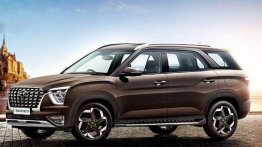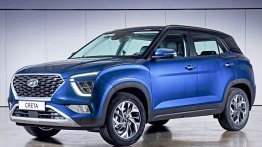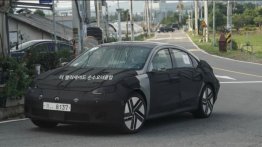By Kaustubh Shinde
24th September saw Hyundai strengthening its commitment towards the Indian market by launching the all new 2010 Hyundai i10 ahead of its international debut at Paris Motor show. Earlier rumored as just a small facelift, Hyundai surprised us all by giving the car a complete overhaul in every aspect. So without wasting much time, let’s get down to it.
* Design
The old i10 wasn’t exactly a looker and at first glance so isn’t the new one. The i10’s design is inspired by their new philosophy - Fluidic Sculpture, first shown in the ‘Concept RB’ that was launched at Moscow motor show 2010. But as the Concept RB is a sedan, the lines that started from the bonnet were stretched all the way to the boot thus completing the whole appeal. On the other hand, the i10 (being a hatch) is tall and the lines are suddenly cut short so the whole design looks a bit botched up. Having said that, the i10 certainly grows on you the more you look at it.
In terms of Exterior design, the new i10 is a comprehensive facelift with every aspect of the car, right from the front bumper to taillights, given a fresh look. No doubt you can still find some glimpses of the old car in the roof line and side profile, but overall the car looks new.
The car now also comes with electrically heated OVRMs with side indicators which is a pretty neat touch and adds to the looks of the car. If only they were electrically adjustable as well (just a thought).
Other features include a micro antenna, light reflectors on rear bumpers and an electric sunroof.
* Engine
Along with the design, the engines have also been re-engineered to meet the BSIV norms. The new car features 2 new engines: 1.1 iRDE2 and 1.2 kappa2 VTVT.
1.1L iRDE2 produces 69 PS 5500 rpm (3 PS more than the old one) and 10.1kgm@ 4500 rpm. So unlike the old car which used to run out breathe at 2500-3000 rpm, this is a more rev happy engine. The company claims that this engine can deliver 19.81 km per litre.
The significant change is the 1.2 kappa2 with VTVT (Variable Timing Valve Train). The VTVT technology allows the engine to vary the timings of opening and closing the valves based on certain parameters. This is sure to improve the performance and fuel consumption of the car. This engine produces 80 PS @ 6000 rpm and 11.4 kgm @ 4000 rpm. The company claims 20.36 kmpl for this engine.
Dieselheads, I am afraid you need to look somewhere else for the moment as both the engines are only available in Petrol.
* Interior
The dashboard has been completely revamped with a bit of chrome and silver spread here and there. The gear knob is still in the old elevated position so it does take some time to get used to. The plastic quality is still a bit tacky but the car feels solidly built nonetheless.
A really interesting, first-in-its-class feature that I really liked is a Transmission Shift Indicator which tells you which gear you should be in for maximum fuel efficiency. I really don’t know about fuel efficiency but this feature is sure to attract learning drivers who find it confusing when to change gear.
The interiors are now loaded with tilt adjusted steering, bluetooth connection, steering mounted controls and digital fuel indicator.
* Safety
The top model comes loaded with dual airbags and ABS. Realizing that this is a city run around; Hyundai has blessed this car with reverse parking sensors which is becoming more of a necessity when it comes to parking in tight areas. The car also comes with engine immobilizer and a sensor that unlocks all doors when it senses a crash.
* Overall
Hyundai has identified its market carefully and has made a potentially-popular product. The car is a city run around that it loaded with a lot of features when matched against the competition. Plus, the number of variants that Hyundai is offering is almost as if you can custom-make a car for yourself!
If you consider the 1.1L, 1.2L engines coupled with Manual and Automatic transmission, Hyundai is offering a total of 8 variants which can be chosen in 8 different colors. The brochure almost looks like a buffet dinner J
* Our Verdict
Unlike the Verna transform, this is an honest attempt to make an already good car better. The impressive number of features on the new car makes it a really good value proposition when stacked against the competition and is sure to claw back some market share.












